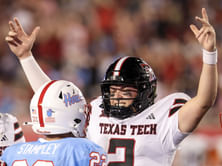
Clemson University, located in South Carolina, is home to a thriving football tradition that ignites passion among students and fans. The Clemson Tigers football team showcases excellence on the field, backed by a history of remarkable achievements. From thrilling victories to fierce rivalries, their games are integral to the university's culture.
The team's iconic orange and purple colors and their formidable presence in the Atlantic Coast Conference (ACC) embody the spirit of Clemson's sportsmanship and dedication. Adding to this vibrant atmosphere, the Clemson Tiger, their fierce and beloved Clemson mascot, rallies fans and symbolizes the team's strength.
Clemson Mascot
Clemson mascot is the tiger, representing strength, determination, and a fierce competitive spirit. The Clemson Tigers athletic teams proudly sport this powerful symbol. The tiger represents not only the university's sports teams but also a unifying figure that brings together students, alumni, and fans in a shared sense of pride and camaraderie.
Moreover, the Clemson logo, prominently featuring the distinctive Tiger Paw, is a bold representation of the university's athletic identity, recognized and revered by fans nationwide. But the question arises: Where did the Clemson tiger paw come from? Let’s take a look closer at Clemson Tiger Paw’s history.
Origins of the Clemson Tiger Paw
Behind every great symbol lies an intriguing origin story, and the Clemson Tiger Paw is no exception. In the late 1960s, a rebranding initiative took root within the university, leading to discussions about updating the traditional tiger logo. A committee composed of notable figures like Athletic Director Frank Howard, Assistant Athletic Director Bill McLellan, and Head Football Coach Hootie Ingram embarked on the mission to craft a new emblem reflecting Clemson's identity and values.
The Creative Journey
The task of designing the new logo was entrusted to the Henderson Advertising Agency in Greenville, SC. James M. Henderson, a Clemson graduate and the agency's owner, took on the challenge with fervor and determination, despite knowing the compensation would be minimal. Alongside his vice president, Fred Walker, Henderson ensured that the project was handled with the utmost care and commitment.
After brainstorming various ideas, the concept of the Tiger Paw emerged as a strong contender. In June 1970, creative designer and artist John Antonio embarked on the process of bringing this idea to life. Antonio's expertise and dedication led to the birth of the Clemson Tiger Paw on July 21, 1970.
The impact of the Tiger Paw was profound and immediate. It wasn't just confined to the football team's helmets and jerseys; it made its way onto every athletic team's uniform, schedule cards, bumper stickers, and even the basketball court and football field. The logo represented a unifying thread that connected all aspects of Clemson's athletic endeavors.
What Does The Clemson Tiger Paw Mean?
The Tiger Paw isn't just a simple graphic; it carries subtle intricacies and symbolism that add to its allure. The logo is positioned at a 30-degree angle, symbolizing the traditional 1:00 kickoff time for football games. The slight indentation at the bottom of the paw has a unique backstory—it resulted from a scar on the paw of the tiger that inspired the logo.
The Clemson Tiger Paw's origin story is a testament to the power of creativity, collaboration, and the unwavering dedication of individuals who believe in the essence of their institution. This symbol stands tall as an embodiment of Clemson's journey, capturing its essence in a single, iconic image that resonates with generations past, present, and those yet to come.
FAQs
A. Clemson's mascot is the Tiger, symbolizing strength, determination, and the university's competitive spirit in sports and academics.
A. The Tiger Paw logo was designed in 1970 by John Antonio, inspired by a photo and a cast of a tiger's paw.
A. The Cub, a younger version of the Tiger, adds a playful element to the mascot duo's representation of Clemson's spirit.
A. The 30-degree angle signifies a 1:00 kickoff time, a common occurrence in past football games.









